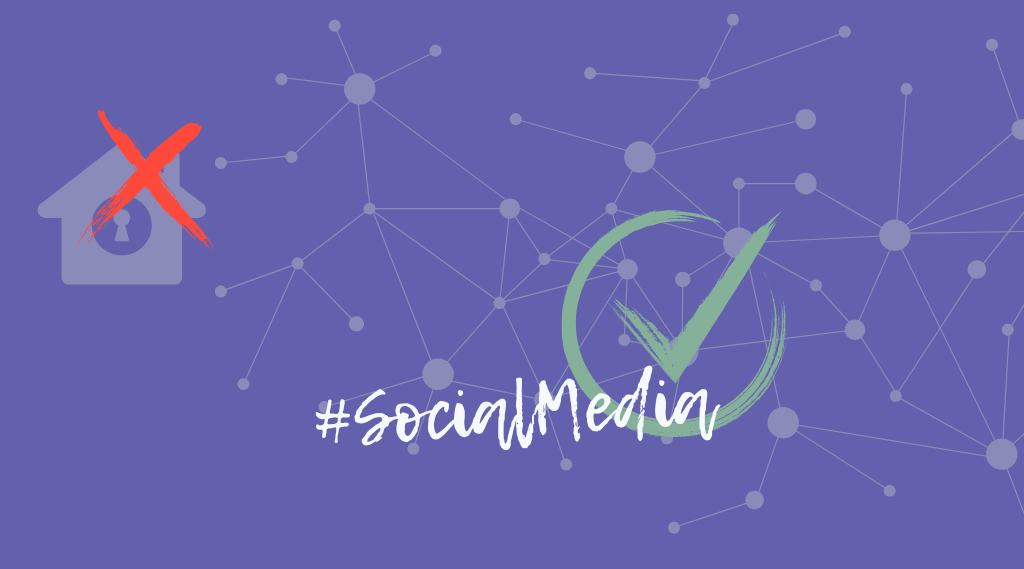Social Media Principles: The Myth of Reach [EN]
This is a translation of the original German article from November 14, 2023: Social Media Grundsätze: Mythos Reichweite
Social media is the golden calf when it comes to getting reach as a creative. But what does „reach“ actually mean?
Disclaimer
I’ll say right away: I worked in a social media agency around 2008 and have worked in social media support or with the team at several other agencies and employers over the years. As a result, I’ve also had a few training courses, including one from Google and the like. I know how things work, what is recommended and why and sold for lots of money to companies and individuals. BUT I do almost everything differently to the people in agencies. Why? Because, in my opinion, it can be done differently and, above all, in a more relaxed way. You CAN play by the rules of the platforms and their algorithms, but you DON’T HAVE TO.
What does „reach“ mean?
If you read relevant information pages for social media marketing, they all agree that reach has something to do with the number of the followers, number of target persons, interactions, influence and return on investment (ROI).
When I write about reach, I mean how many people you actually reach with your post.
Who do we really reach on algorithmically controlled networks?
The whole thing has several levels. Let’s start with the pure numbers. Let’s assume someone has 500 followers on an algorithmically controlled network such as Instagram. This person may now assume that they will reach 500 people when they make a post. However, experience shows that only a few of them will click or even reply.
In fact, this person does not even reach 500 people. This is because the algorithms calculate every millisecond what would most encourage each individual user to continue spending time in the system; meaning: time in which people can be shown adverts, i.e. fulfilling the contract with the platforms‘ actual customers.
Reminder: The customers are not us, but the companies that pay a lot of money to display their adverts to users.
Realistically, you will reach around 15-20 % of the number of followers shown to you on algorithmically controlled networks. Everyone else is shown something else, they never see your post unless they go directly to your page. If they just remember you. With thousands of posts per day chasing through the timeline that can be difficult.
Yes, but if my post goes viral … !
For anyone who doesn’t know what that means: Going viral means that a post is shared often and by a lot of people in a short period of time. We have been able to observe the origin of the word in the last three years, even though the social media term already existed before COVID. However, (almost) exponential growth is meant here.
And what does that mean in practice? A brief excitement. Hopefully a few new followers.
The real question is: How much traffic does the post bring to your author website? To your blog? Your own book shop? If the post only remains within the network, then you won’t get much from the viral post, unless it brings you a large number of new active followers who now check your profile every day for new content. (Which also means: more work to please the algorithm.)
Actually, the algorithms don’t care whether your post goes viral or not. They use your post to make others stay on the platform longer so that they can then display a customer’s advert next to it. In other words, the platform earns money because of your post.
Downranking & Shadowbanning
They say that if you play by the rules of the algorithms, post something people like to interact with every week on Mondays at 8.05 a.m. and then interact a lot with others, you will always appear in the timelines of other users. However, if you are not so obedient or simply have a life in this 3D world, you will soon run out of algorithmic luck. If you don’t post for a long time or post too infrequently or irregularly, the algorithms will no longer let you into anyone’s timeline, depending on how the algorithms are currently set.
Shadowbanning refers to the situation when someone’s posts are no longer displayed in the timeline of others.
This form of „punishment“ also leads to stress and makes us constantly trying to serve the algorithms in our hamster wheel when we could actually be writing new books.
Do we have to be everywhere to reach anyone at all?
Does it make sense to invest time in being on 3, 4 or 5 networks and serving their respective algorithms? Hardly.
Do you fancy having a look at a new network? That’s a completely different question! But setting it up fully for the company as part of your external presence is perhaps a bit much. We all have only 24 hours a day and it’s questionable whether a fragmented external presence will help you.
But I have to be where my target group is!
That’s what we’re told again and again, yes. Because the whole „magic“ of commercial social media platforms lies in paid targeted advertising. You will find people who are interested in your work on the big commercial platforms, IF you pay money for it. Or otherwise only to a very limited extent. But even for money, you don’t get any information about your prospective customers. That’s the platforms‘ trade secret. You don’t get an email list of 500 people who are interested in your books, but you pay money for the algorithms to do the magic in the background and – hopefully – deliver your content to people who might be in your target group. (More on this in the article on paid social media advertising, currently available in German; maybe I’ll translate that one next.)
So maybe the question isn’t necessarily where your target audience (supposedly) is, but how you can really interact directly with the people who are interested in your work without all the power being held by a platform and only working in exchange for bigger coins.
Target group analysis: Who do you want to reach and why?
This brings us to the question: Who is your target group? And now let’s forget the usual demographics of age, gender, skin colour, residential area … What moves these people? What do they love? What are they completely absorbed in? What is their biggest problem and how do you help them overcome it? And where and how do they spend their time? Once you have that clear for yourself, what do you want from them?
And now on to the question: What kind of books do you write? Or what kind of music / art do you make? What connects you as a human being with your target group? Very few of you will produce works that doesn’t interest yourself, right?
Be where you feel comfortable, that attracts people
The chances are good that you will produce art that interests you. And that you can inspire people in your neighbourhood because you find mutual interests on a very human level. If you now have to switch to another platform to find people who have the same interests as you, then you should ask yourself whether you’ve been on the right platform for the last few years.
Seriously. Our fans are not stupid. They realise pretty well if you’re only somewhere because your publisher or label wants you to, that you only post something somewhere when you want money from your followers (i.e. when you have a new book) and are otherwise never available. This doesn’t build trust and doesn’t make people curious about your work.
The opposite is true: where you feel comfortable, where you enjoy interacting with people, where you are approachable and present, you will also build a community and find people who are interested in you and your work.
Reach in the Fediverse
I’ll write you another blog post about the Fediverse. The last ones are from November 22 (German)and June 23 (English).
Reach is a completely different matter in the fediverse than on the algorithmically controlled networks. Because there are no algorithms that decide what is interesting for each of us or not. If we have 500 followers there, then our post goes into the timeline of 500 followers. Full stop. Chronologically and without much relevance weighting. Your book announcement is then placed between the news and the puppy picture and the text-only post where someone asks for a recommendation for XY.
Even better: if someone shares your post, your post will also reach all of that person’s followers. And even in other Fediverse networks, where the post can then be shared even further. You will probably even reach well over 500 people. Will they all see it or will some scroll over it? Probably. But there is no downranking or shadowbanning in the Fediverse. And the „scrolling“ followers will be able to see the next post normally in their timeline next time.
Tip: By the way, it’s definitely worth sharing your own post again at a different time. For the night shift – or the early one, depending on when you originally made the post.
Interaction rates in the Fediverse
Most people who have joined the Fediverse from Twitter or Facebook report that they have a much higher interaction rate with a fraction of the number of followers.
-> heise online on Mastodon: Review after the first year in the Fediverse (German)
So even if you „only“ have 50 followers instead of 500, you still have more to do with them than you did with the 500 before, because the Fediverse is designed for human-to-human communication. And, remember, of the 500, you only reached 50-75 people before and some of them still need the time to interact with your post.
Have a look around the Fediverse, there are lots of different platforms there, including some that look like Facebook or Instagram. We run a Mastodon server ourselves at https://literatur.social/. Registration is open, come in and give it a try. We can moderate in German and English. I’ll do a separate post on how to get started in the Fediverse, I’m just finishing the series on social media principles first.
Social Media Principles [EN]
The Myth of Reach
Beginner’s Guide to the Fediverse
Fediverse – Next Steps (coming soon)



2 Kommentare